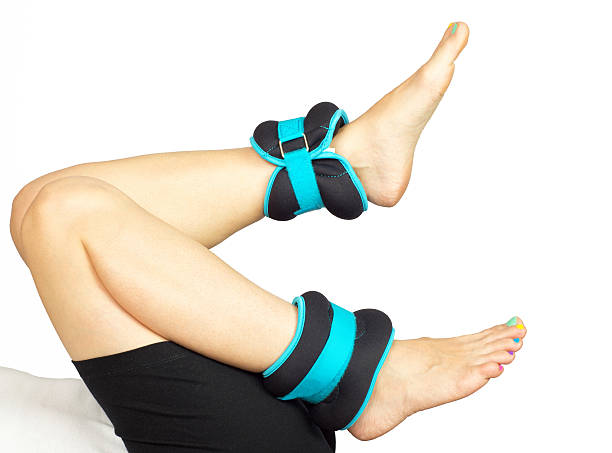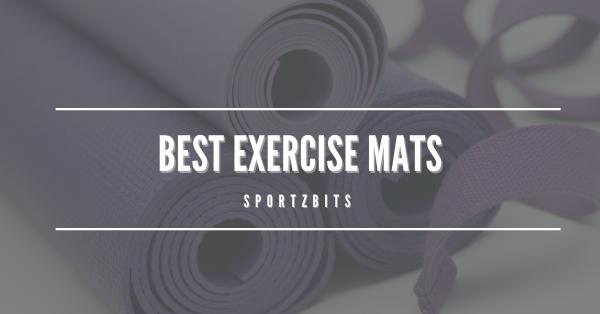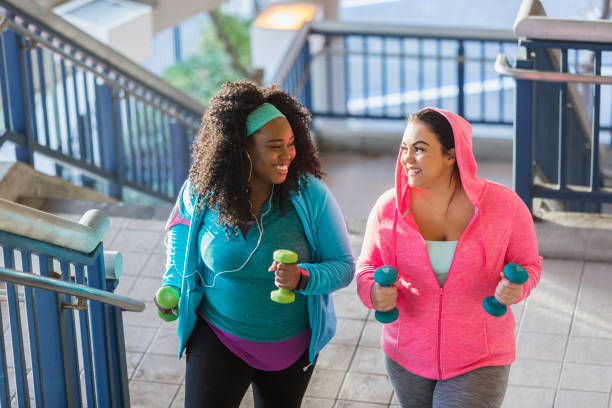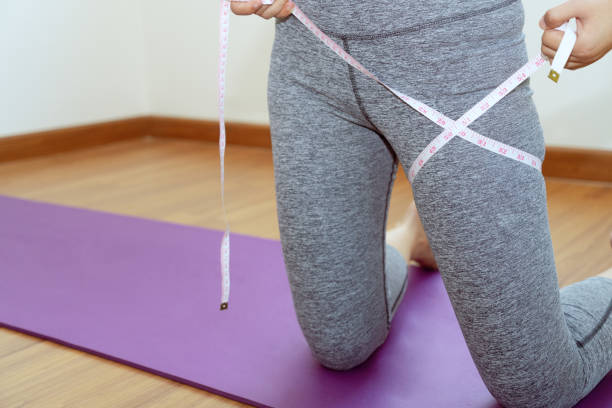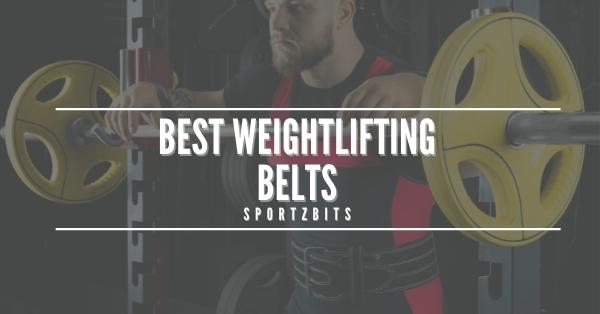Typically, the glutes are neglected and not fully utilized in everyday activities. It’s crucial for every individual and athlete to pay attention to improving the size and efficiency of their glutes to minimize injury risk and improve performance. One can add glute-activating exercises to a daily routine of 10-15 minutes or do them before going to sleep. The aim should always be to bolster glute strength and power while decreasing discomfort.
Related read: Glute Exercises You Can Easily Do at Home

What is a glute activation exercise?
Tight glutes? One of the most common problems people have is tight glutes. Gluteal muscles are responsible for not only moving your upper extremities but also stabilizing your lower body during movement to protect your spine. When your glutes are not firing properly, it can cause you to be unstable in certain activities and lead to pain in the low back, hips, knees, and ankles.
Glutes and Their Importance
The glutes (gluteal) are three large muscle groups deep within each hip socket. They include the gluteus maximus, medius, minimus, tensor fasciae latae, piriformis, obturator internus, gemellus superior, quadratus femoris, sartorius, gracilis, pectineus, adduct ors longus/brevis, and abductors brevis/longus.
The gluteal muscles play a major role in maintaining balance while walking or running by providing stability through the contraction of these muscles. These muscles help maintain posture and support the pelvis when standing upright. Glute weakness can lead to decreased mobility and an increased risk of injury.

Hip flexion strength is important because it helps prevent anterior cruciate ligament tears, medial collateral ligament tears, posterior cruciate ligament tears, and rotational instability. Hip extension strength is also an essential component of athletic performance since this muscle group allows athletes to jump higher and run faster. Weakness in hip extensors may result from lack of exercise, overuse, trauma, surgery, arthritis, neurological disorders, or other causes.
Why do we need to activate our glutes?
Starting a workout without activating your glutes can create problems. Your glutes are the largest muscle in the body and play a major role in producing power for movements such as walking, running, jumping, and kicking. In addition to powering movements, the gluteus maximus helps keep you upright by controlling hip rotation and providing stability to the pelvis; the best exercises for activating your glutes contract this muscle group while standing on either the left foot or right foot.
How do you know if you have weak glute muscles or are not activated?
If you have tight hips (tightness of the muscles around the front of your hips), then it is likely that your glutes aren’t being used properly during exercise routines. If you notice any pain when doing squats, any lunge position, deadlifts, step-ups, etc., then the chances are good that your glutes need some work! You can also use a foam roller to help loosen up these areas.

The following exercises will help glute activation and increase glute strength and endurance.
Remember that these movements should only be performed if there is no pain when performing them.
Types of Glute Activation Exercises
Many exercises are done without the buttocks, which means poor glute activation or that these muscles are not activated. For strength training or any movement to be effective, the gluteus maximus needs to be activated. This is because it stabilizes your hips and pelvis during functional activities.
Here are easy exercises that target the gluteus maximus for stronger glutes:
Basic Glute Activation
There are many benefits of activating your glutes. Glute activation exercises can help to improve back and hip function, reduce the risk of injury and even improve performance in your workout.
Glute activation exercises are important for so many reasons! The muscles used in these movements involve the hamstrings, quadriceps, adductor magnus, iliacus, piriformis, and the gluteus maximus. These muscles work together as a unit to stabilize your spine and pelvis while you move throughout daily life. They also play an integral role when performing sports or other physical activities. When they become weak or injured, it is common to lead to lower back pain, knee problems, ankle sprains, foot injuries, etc.
Activating your glutes helps prevent all of those issues from occurring by strengthening them. By activating your glutes regularly, you’ll not only strengthen them but improve their function as well.

Pigeon Pose
Pigeon pose is a beginner-level yoga pose that can be used as a stretch or an exercise. Like other exercises, the pigeon pose can strengthen the glute muscles and the hips. This is significant because people who sit at desks all day often experience tight hip muscles and stiff, inflexible glutes. In addition, inflexible hips can limit the range of motion in other exercises such as squats, lunges, and deadlifts. Strengthening these areas will help to prevent injury during physical activity.
You may try using: Best Power Racks and Squat Racks for Home Gym

Hip Thrusts
The hip thrusts are a great glute activation exercise that can be performed for many reasons. Hip thrusts target the glutes and the hamstrings and affect the calves, knees, and core muscles. Hip thrusts can help relieve back pain, and knee pain and improve functional strength.
Adding some free weight to the movement will add some resistance. The more you increase your weight, the harder it will become. This makes this exercise very effective at increasing muscle mass while decreasing body fat percentage. When performing these exercises, make sure not to over-extend or hyperextend your joints.

Clamshells
Clamshells are a great exercise to activate your glutes and abdominals while strengthening your pelvic floor muscles. The clamshell position allows you to engage both areas without moving around much. It also helps strengthen your core because you have to stabilize yourself throughout the entire motion.
To perform clamshells, lie on your stomach with your arms outstretched above your head. Your legs should be straight and together so that they form an “L” shape. Clasping your hands behind your neck will help keep your spine stable during this exercise. Next, lift one leg off the ground until it is perpendicular to the rest of your body. Then slowly lower back down while keeping the opposite foot lifted similarly. Repeat for 10-15 reps before switching sides.

The Clam
Glute activation exercises are the key to function and play a vital role in building strength and preventing injury. The clam exercise is one of the most effective glute activation exercises for targeting the deep muscles of the glutes.
When performed correctly, it can be used as part of a warm-up routine or as a stand-alone exercise on its own. It’s also an excellent way to target the adductors (inner thigh), which often get overlooked when performing traditional hip flexors stretches. To perform this exercise:
- Lie face down with knees bent 90 degrees at knee height. Place hands behind the head so that they support the upper body’s weight. Keep feet flat on the floor.
- Lift hips off the ground until thighs form a right angle between legs and torso. Hold the position briefly before returning to starting position. Repeat 10 times in each direction.
Lateral Band Walk
Recent studies prove that the lateral band walk exercise is a beneficial form of glute activation exercise that can help improve form and function. The way it works is simple – one footstep out between the two lateral resistance bands, with the back heel off the ground, while one foot starts to come towards the first foot as the knee bends, driving the hips backwards. The second foot then steps back as the knee straightens.
This movement should be repeated for 30 seconds on both sides. It’s important not to overdo this exercise because you could injure your knees or ankles if they are weak. If you have any concerns about doing this exercise, consult a doctor first.
You may also like: Resistance Band Exercises

Glute Bridge
Lie on your back with knees bent and feet flat on the floor. Place a towel under each knee so you can place pressure on them while keeping your lower body stable. Lift one leg off the ground until it’s straight out in front of you (as shown). Hold this position for 5 seconds before lowering the leg down again. Repeat ten times per set. Do three sets total.

Side Plank
Start by lying face-up on the side of a bench or table. Your legs should be stacked together and slightly wider than shoulder-width apart. Raise both arms above your head as if doing pushups. Keep your hips lifted, but don’t allow your shoulders to drop below parallel to the floor.
Lower yourself slowly into a plank position. You’ll feel like you’re going to fall over at first, but keep pushing through that feeling. Once you’ve reached full extension, hold for 1 minute. Then lower back down onto all fours. That’s one rep. Perform 8-10 reps with each arm—complete two sets.
Also read: Different Types of Push-Ups

Calf Raises
Stand tall with feet hip-distance apart. Bend forward so that your body forms an “L” shape (your knees will naturally bend). Place hands on the ground in front of you about shoulder-width apart. Slowly raise your heels off the ground until they are just barely touching it. Hold this position for 30 seconds, then return to starting position. Repeat ten times and complete three sets.

Hamstring Curls
Stand up straight with legs slightly wider than hips. Lean forward from waist height while keeping shoulders level. Keep elbows close to sides as if hugging a wall. Raise your right leg behind you and curl it toward your chest. Lower back down, repeat 5-10 times. Switch arms and do the same exercise but for the lower-left leg instead—complete two sets.
Squats
Start by standing tall with weight evenly distributed between both feet. Squat down, slowly lowering yourself into a full squatting position. Stand back up when your thighs are parallel to the floor or just below them. Do not let knees go over toes. If needed, place hands on the ground in front of the body for balance. Perform eight repetitions. Repeat this movement ten times.

Kneeling Hip Drive
The function of the gluteus maximus is to extend, externally rotate, and medially rotate the hips. With these muscles as key stabilizers, the hip joint can withstand large forces and not be susceptible to injury. However, running and other activities can often lead to muscle imbalances on both sides of the hip, leading to decreased stability and increased risk of injury.
The kneeling hip drives exercise targets all three functions of the glutes by having you perform a squat while simultaneously extending your legs out behind you (external rotation), driving your heels into the ground (medial rotation), and pushing off with your feet (extension).
Conclusion
In conclusion, there are many benefits to performing glute activation exercises. They improve form, enhance functional performance, and promote healthy, pain-free movement.
We recommend performing at least one glute activation exercise each day to improve your physical health!
